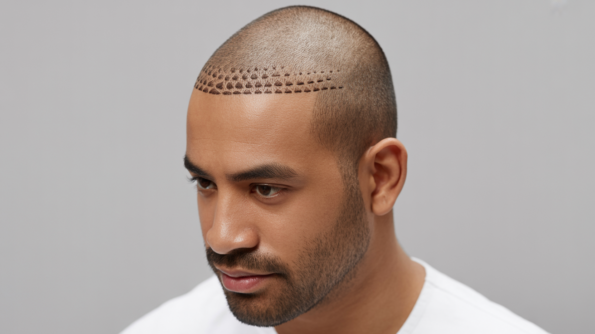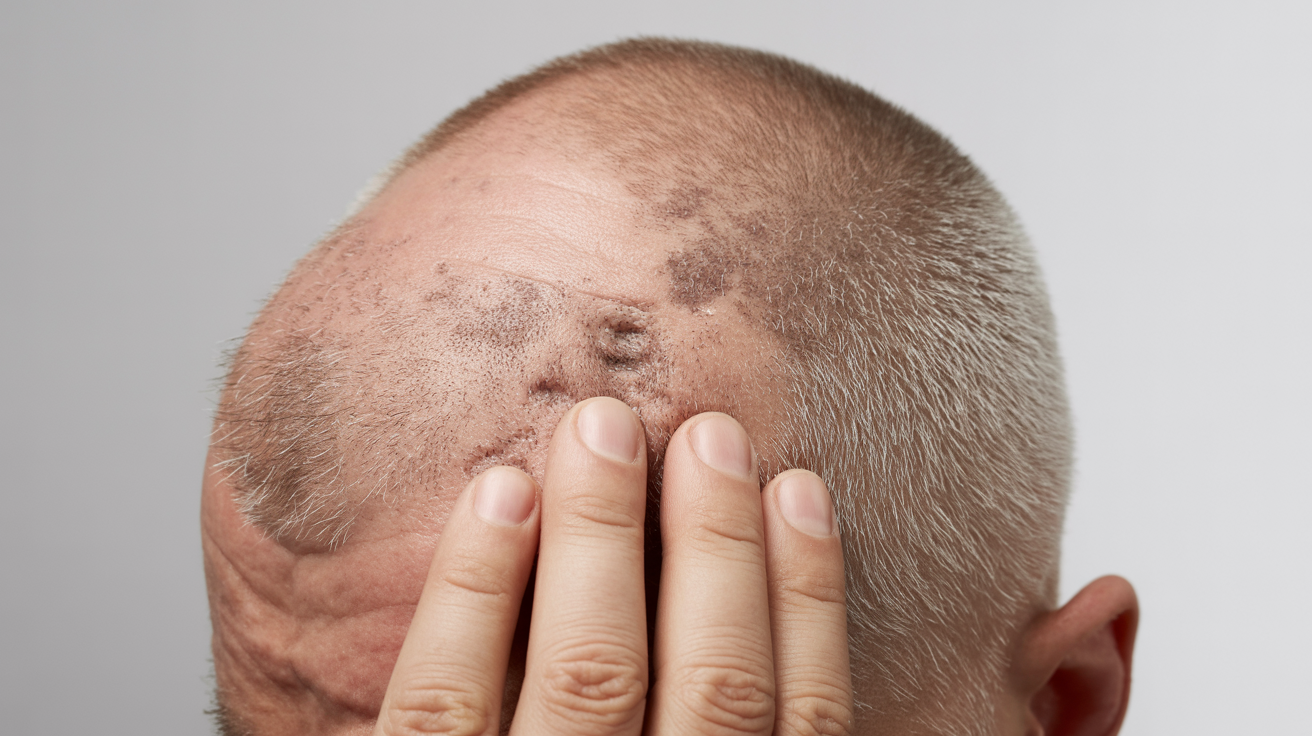Hair transplants have become one of the most effective solutions for restoring lost hair and rebuilding confidence. However, ethnic hair transplants, including procedures for African, African American, Asian, Hispanic, and Middle Eastern patients, require unique considerations. The reason lies in the differences in hair texture, growth patterns, skin type, and hairline design preferences across different ethnic groups.
In this blog, we’ll cover:
- Why ethnic hair transplants are unique
- Common hair loss concerns by ethnicity
- FUE vs. FUT for ethnic hair
- Scarring considerations
- Hairline design for natural results
- What to expect during and after surgery
- Recovery tips
- Pros and cons of ethnic hair transplant surgery
Why Ethnic Hair Transplants Require Special Attention
Unlike straight hair, ethnic hair often grows in curved or tightly coiled follicles. This means extraction and implantation require special tools and precision. A surgeon who applies the same approach used for straight hair may risk damaging grafts, reducing survival rates, or creating unnatural results. Key reasons why ethnic hair transplants need specialized care:- Curved Follicles – Common in African and Middle Eastern hair; harder to extract without damaging grafts.
- Lower Hair Density – Some ethnic groups naturally have fewer donor hairs, making planning crucial.
- Skin Pigmentation – Darker skin tones are more prone to scarring and keloid formation.
- Hairline Aesthetics – Natural hairline shapes vary by ethnicity, and ignoring this leads to an artificial look.
Common Hair Loss Concerns in Different Ethnic Groups
Hair loss affects all ethnicities, but patterns and causes differ based on genetics, cultural practices, and medical conditions.1. African / African American Hair
- Most common problem: Traction alopecia.
- Cause: Tight hairstyles like braids, weaves, ponytails, and dreadlocks that put constant tension on hair roots.
- Result: Thinning edges and bald patches, especially along the hairline.
- Solution: Hair transplants can restore edges once damaging hairstyles are discontinued.
2. Asian Hair
- Most common problem: Crown baldness (top/back of head).
- Cause: Genetic male/female pattern baldness.
- Challenge: Asian hair is usually straight and thick, which requires careful graft placement for natural blending.
3. Hispanic / Latino Hair
- Most common problem: Patchy bald spots due to alopecia areata.
- Cause: Autoimmune conditions that attack hair follicles.
- Treatment: Combination of medical therapy and, if stable, hair transplantation.
4. Middle Eastern Hair
- Most common problem: Receding temples and thinning at the hairline.
- Cause: Genetic pattern baldness, often beginning at a younger age.
- Benefit: Usually dense and coarse donor hair, providing good coverage when transplanted.
Hair Transplant Techniques for Ethnic Hair: FUE vs. FUT
Two primary techniques dominate ethnic hair transplants: Follicular Unit Extraction (FUE) and Follicular Unit Transplantation (FUT). Each is adapted to handle high-risk textures.FUE for Ethnic Hair
FUE extracts individual follicles using a micro-punch, ideal for African hair’s curved follicles. Surgeons use specialized tools to follow the follicle’s natural path, minimizing transection rates to below 4%. This minimally invasive method leaves tiny, dot-like scars that blend into textured or short hair, making it perfect for those preferring close-cropped styles. For Asians, FUE’s precision suits thick, straight strands, while robotic systems enhance accuracy, transplanting 1,500–3,500 grafts per session.FUT for High-Density Needs
FUT involves removing a scalp strip, dissecting it into grafts under a microscope. It’s suited for Middle Eastern or Asian patients needing extensive coverage, providing 3,000–5,000 grafts. The linear scar is concealable with longer, wavy hair, but less ideal for keloid-prone African skin. Trichophytic closure allows hair to grow through the scar, improving aesthetics. Hybrid FUE-FUT approaches maximize graft yield and precision for complex cases. Always choose a surgeon with a portfolio of ethnic hair transplant results to ensure expertise.Scarring in High-Risk Ethnic Hair Transplants
Scarring is a major concern for ethnic hair types due to diverse skin healing responses. Curly African hair hides FUT scars well, but FUE’s micro-scars may be visible in Asians with thinner, lighter hair. Darker skin tones risk keloids, especially in African or Middle Eastern patients. To minimize scarring:- Pre-Treatment: Steroid injections or silicone sheets reduce keloid formation in high-risk skin.
- Advanced Techniques: Robotic FUE ensures uniform extraction, lowering tissue trauma.
- Post-Op Care: Avoid sun exposure and use scar-reducing creams like silicone gels.
Crafting a Natural Hairline for Ethnic Hair
A well-designed hairline is crucial for high-risk ethnic hair transplants. It must align with cultural aesthetics and facial features. African hairlines are typically lower and rounded, requiring dense, coiled grafts. Asian hairlines favor subtle recession with straight growth patterns, while Middle Eastern designs balance wavy textures with moderate density. Key considerations include:- Shape and Density: Gradual density prevents an unnatural, “pluggy” look.
- Placement: Aligns with forehead contours for harmony.
- Growth Angles: Matches curls or waves for seamless styling.
What to Expect During and After Surgery
Ethnic hair transplant surgery typically lasts 4–8 hours. Here’s the process:- Anesthesia: Local numbing ensures comfort.
- Follicle Extraction: FUE or FUT harvests grafts from the donor area (back/sides of scalp).
- Graft Preparation: Follicles are sorted for optimal placement.
- Implantation: Grafts are inserted into tiny incisions, respecting natural growth angles.
- Recovery: Mild swelling and scabbing subside in 1–2 weeks. Transplanted hair sheds initially (shock loss), with new growth starting at 3–6 months and maturing by 12–18 months.
Recovery Tips for Successful Outcomes
Recovery is critical for high-risk ethnic hair transplants. Follow these tips:- Adhere to Instructions: Take prescribed antibiotics and avoid touching grafts for 7–10 days.
- Protect the Scalp: Wear hats to shield from sun, preventing pigmentation issues.
- Gentle Care: Use mild, surgeon-recommended shampoos; avoid scratching.
- Sleep Elevated: Reduces swelling for the first week.
- Nutrition: Biotin, protein, and hydration support healing.
- Follow-Ups: Attend check-ins at 1, 3, and 6 months to track growth.
Pros and Cons of Ethnic Hair Transplants
Pros
- Enhanced Confidence: Restores a youthful, culturally resonant appearance.
- Permanent Results: Grafts grow lifelong, unlike temporary solutions like wigs.
- Natural Aesthetics: Skilled surgeons ensure seamless integration with existing hair.
Cons
- Cost: Ranges from $5,000–$15,000, higher for complex ethnic cases.
- Scarring Risk: Elevated in keloid-prone or thin-haired individuals.
- Complications: Infection or low graft survival (under 10% with inexperienced surgeons).
Empowering Your Hair Restoration Journey
Hair transplants for high-risk ethnic hair types are more than cosmetic—they’re a celebration of identity and diversity. With the right surgeon, advanced techniques, and diligent recovery, you can achieve stunning, natural results that last a lifetime. Ready to start? Contact HairFree HairGrow for a personalized consultation. Our ethnic hair restoration experts use cutting-edge tools to deliver results that honor your unique hair and heritage. Book now and take the first step toward confident, vibrant hair!Written By
MD (Skin & VD)
Dr. Santpal Sangwan is an experienced hair restoration surgeon specializing in Hair Transplants in High-Risk Ethnic Hair Types. With advanced surgical skills and patient-focused care, he provides natural, long-lasting results while addressing the unique challenges of diverse hair textures and complex transplant cases.
Disclaimer
We’ve made all possible efforts to ensure that the information provided here is accurate, up-to-date and complete, however, it should not be treated as a substitute for professional medical advice, diagnosis or treatment. See Detailed Disclaimers Here.





